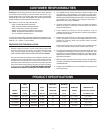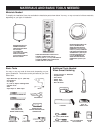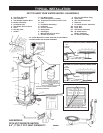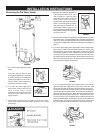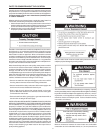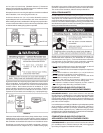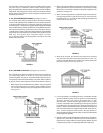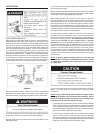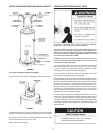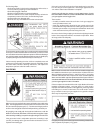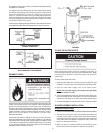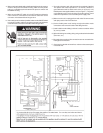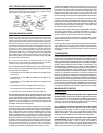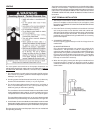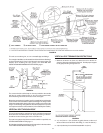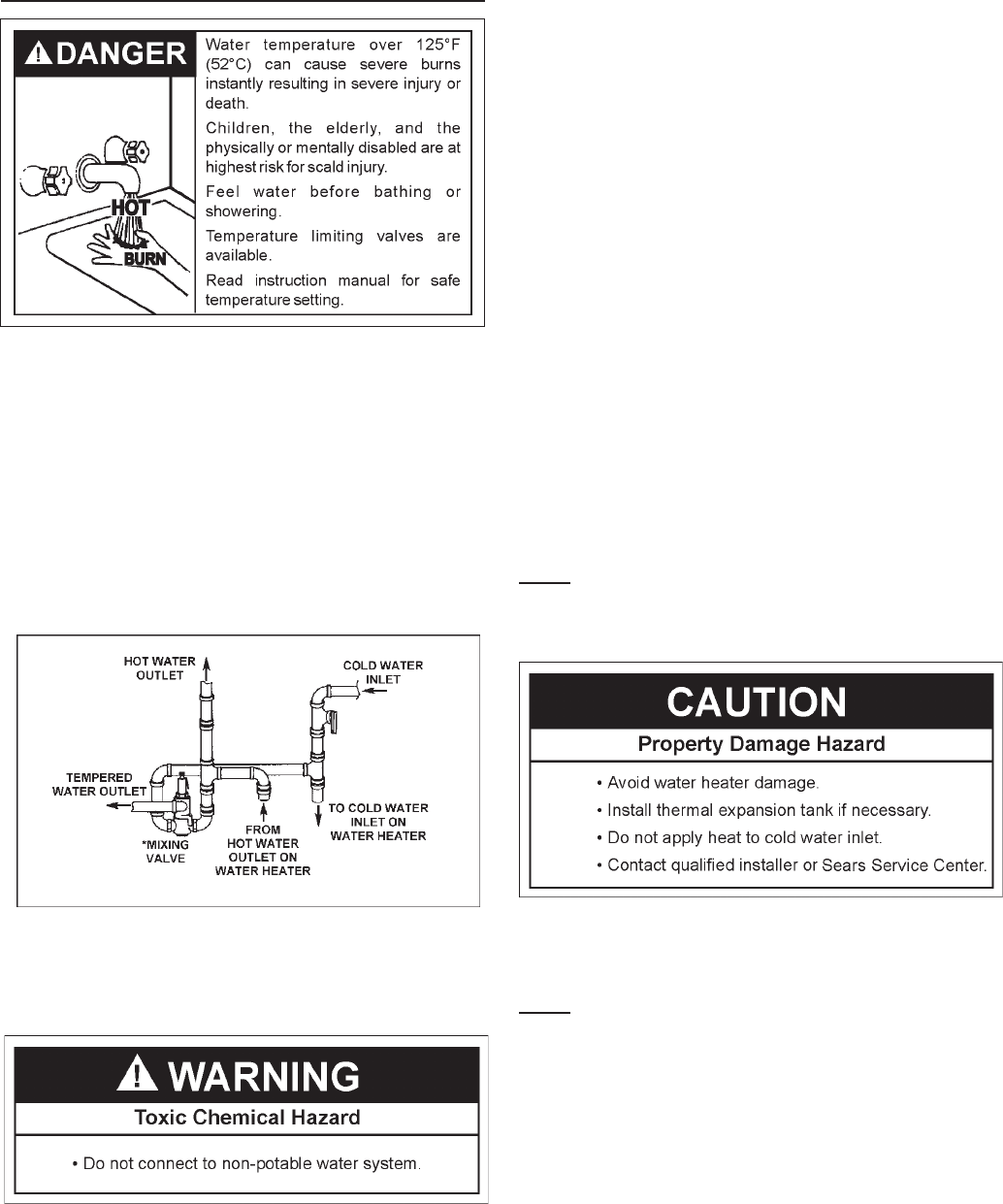
12
Toxic chemicals, such as those used for boiler treatment shall not be
introduced into this system.
When the system requires water at temperatures higher than required
for domestic water purposes, a tempering valve must be installed. Please
refer to Figure 15 for suggested piping arrangement.
Water supply systems may, because of such events as high line
pressure, frequent cut-offs, the effects of water hammer among others,
have installed devices such as pressure reducing valves, check valves,
back flow preventers, etc. to control these types of problems. When
these devices are not equipped with an internal by-pass, and no other
measures are taken, the devices cause the water system to be closed.
As water is heated, it expands (thermal expansion) and closed systems
do not allow for the expansion of heated water.
The water within the water heater tank expands as it is heated and
increases the pressure of the water system. If the relieving point of the
water heater’s temperature-pressure relief valve is reached, the valve
will relieve the excess pressure. The temperature-pressure relief
valve is not intended for the constant relief of thermal
expansion. This is an unacceptable condition and must be corrected.
It is recommended that any devices installed which could create a closed
system have a by-pass and/or the system have an expansion tank to
relieve the pressure built by thermal expansion in the water system.
Thermal expansion tanks are available from Sears stores and through
the Sears Service Centers. Contact the local plumbing inspector, water
supplier and/or the Sears Service Center for assistance in controlling
these situations.
NOTE: To protect against untimely corrosion of hot and cold
water fittings, it is strongly recommended that di-electric unions
or couplings be installed on this water heater when connected
to copper pipe.
Figure 16 shows the typical attachment of the water piping to the water
heater. The water heater is equipped with 3/4 inch NPT water
connections.
NOTE: If using copper tubing, solder tubing to an adapter before
attaching the adapter to the cold water inlet connection. Do not
solder the cold water supply line directly to the cold water inlet.
It will harm the dip tube and damage the tank.
• Look at the top cover of the water heater. The water outlet is marked
“HOT”. Put two or three turns of teflon tape around the threaded end
of the threaded-to-sweat coupling and around both ends of the 3/4”
NPT threaded nipple. Using flexible connectors, connect the hot water
pipe to the hot water outlet on the water heater.
• Look at the top of the water heater. The cold water inlet is marked
“COLD”. Put two or three turns of teflon tape around the threaded
end of the threaded-to-sweat coupling and around both ends of the
3/4” NPT threaded nipple. Using flexible connectors, connect the cold
water pipe to the cold water inlet of the water heater.
WATER PIPING
HOTTER WATER CAN SCALD:
Water heaters are intended to produce hot water. Water heated to a
temperature which will satisfy space heating, clothes washing, dish
washing, cleaning and other sanitizing needs can scald and permanently
injure you upon contact. Some people are more likely to be permanently
injured by hot water than others. These include the elderly, children, the
infirm, or physically/mentally handicapped. If anyone using hot water in
your home fits into one of these groups or if there is a local code or state
law requiring a certain temperature water at the hot water tap, then you
must take special precautions. In addition to using the lowest possible
temperature setting that satisfies your hot water needs, a means such
as a *mixing valve, shall be used at the hot water taps used by these
people or at the water heater, see Figure 15. Valves for reducing point
of use temperature by mixing cold and hot water are also available:
FIGURE 15.
Consult Sears Service Center. Follow manufacturer’s instructions for
installation of the valves. Before changing the factory setting on the
thermostat, read the “Temperature Regulation” section in this manual.
This water heater shall not be connected to any heating system or
component or used as a non-potable water heating appliance.
All piping components connected to this unit shall be suitable for use
with potable water.




